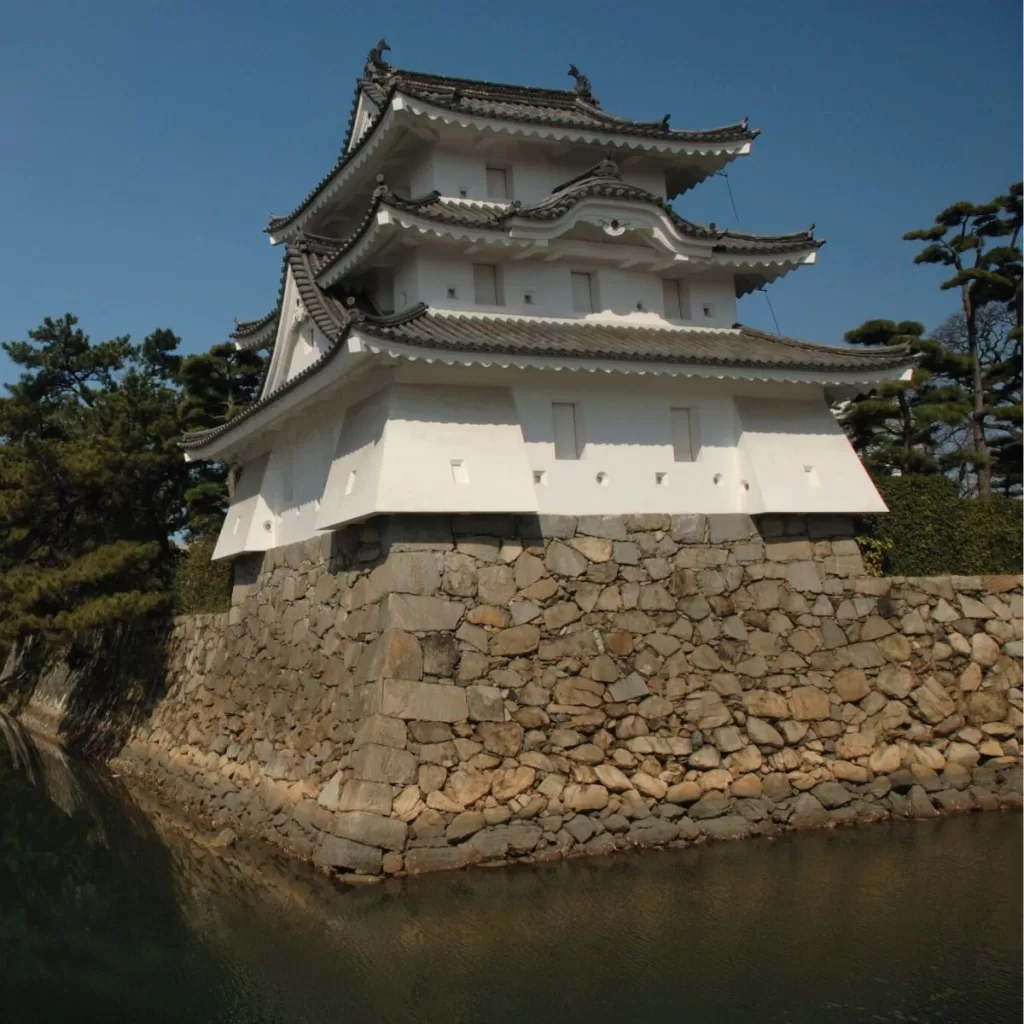Takamatsu Castle: Japan’s Historic Seaside Fortress
Takamatsu Castle is a historic Japanese castle located in the heart of Takamatsu city in Kagawa Prefecture on the island of Shikoku. With its iconic white tower overlooking the shimmering blue Seto Inland Sea, Takamatsu Castle is one of Japan’s most scenic castle sites.
History of Takamatsu Castle
Takamatsu Castle was built between 1588 and 1590 by daimyo Ikoma Chikamasa under orders from Toyotomi Hideyoshi. Ikoma was assigned by Hideyoshi to conquer Shikoku and rule the Sanuki Province during Japan’s Sengoku Period of warring states.
The castle was strategically positioned along the coast to control sea lanes and defend against the rival Mōri clan across the sea in Chugoku Province. Its seaside location enabled the castle to utilize saltwater moats fed directly from the ocean. This made Takamatsu one of only a few “water castles” in Japan, along with Imabari Castle and Nakatsu Castle.
Over the next few decades, Takamatsu Castle served as the headquarters of the Takamatsu Domain which governed eastern Sanuki Province. The Ikoma ruled from Takamatsu Castle for 54 years until being relocated by the Tokugawa shogunate in 1640.
Control of the castle and domain was then granted to the Matsudaira clan, relatives of Tokugawa Ieyasu. The Matsudaira continued to rule from Takamatsu until the Meiji Restoration which abolished the feudal domain system in 1869.

Layout and Design
Spanning 400 by 200 meters, Takamatsu Castle occupied a compact coastal plain hemmed between the sea and Mount Ryuo. Though small for a regional castle, Takamatsu was highly strategic and impregnable.
The castle’s main inner bailey contained a towering five-story tenshu, or castle keep. This was surrounded by a series of stone walls, moats, and gates that formed three concentric enclosures.
The innermost enclosure contained key structures like the tenshu, wells, and storehouses. The outer enclosures held samurai residences, barracks, training grounds, and armories.
Takamatsu’s seaside location enabled another unique design feature – seawater filled the moats instead of freshwater. The ocean fed directly into the moats through an intake gate, keeping them filled at high tide. Three sides of the castle were protected by moats up to 15 meters wide.
Demise and Rediscovery
After the Meiji Restoration, Takamatsu Castle was occupied by the Imperial Japanese Army until 1874. The tenshu was demolished in 1884 due to disrepair. In the subsequent years, many other structures were destroyed or removed.
In the early 20th century, the inner grounds became a public park. A few buildings, such as the Hiunkaku villa were preserved or reconstructed. However, most of the castle sat in ruins.
This changed in the 1950s when remnants of Takamatsu Castle came under heritage protection. Surviving structures like the Ushitora and Tsukimi yagura (turrets) were designated National Treasures. In 1955, the castle grounds opened to the public as a historic site.
Today, just a few original structures remain on the castle grounds, including turrets, walls, gates, and storehouses. But with its scenic seaside setting and reconstructed walls, Takamatsu Castle remains one of Japan’s most picturesque castle sites. The park attracts visitors with cherry blossom viewing in spring and chrysanthemum displays in autumn.
Surviving Buildings and Ruins
Here are some of the key surviving parts of Takamatsu Castle today:
- Ushitora Yagura – a 2-story turret protecting the inner bailey’s northeast corner. One of the few original remaining yagura.
- Tsukimi Yagura – 3-story turret guarding the northwest corner of the inner bailey. Named for its moon-viewing balcony.
- Asahimon Gate – reconstructed gate of the inner citadel. Named for its eastern direction. Features a masugata style complex gate layout.
- Moats – large water-filled moats remain on three sides of the castle. These striking moats are still fed by seawater at high tide.
- Walls – sections of the castle’s massive stone walls have been reconstructed or preserved around the inner bailey.
- Hiunkaku Villa – elegant early 20th century villa now serving as an exhibit space. Stands where the tenshu keep once stood.
- Gardens – beautifully landscaped gardens grace the castle grounds, especially around the Hiunkaku Villa.
Reconstruction Efforts
Efforts are underway to rebuild Takamatsu Castle’s iconic tenshu, demolished in 1884. Modern city planners aim to recreate the five-story castle tower that once dominated Takamatsu’s skyline and served as a regional landmark.
However, architects face challenges accurately recreating the tenshu due to limited historical information and images. In the 1990s, a reward was offered for old photos or plans that could enable an authentic reconstruction.
While efforts continue to rebuild the soaring castle keep, visitors can still appreciate Takamatsu Castle’s seaside beauty and rich history. As one of Japan’s few waterfront castles, it remains a scenic and culturally significant site on the Seto Inland Sea.
If you enjoyed the history of Takamatsu Castle, another must-see Japanese castle is the majestic Shuri Castle in Okinawa, which was the political and cultural center of the ancient Ryukyu Kingdom and features striking architecture and scenic views.